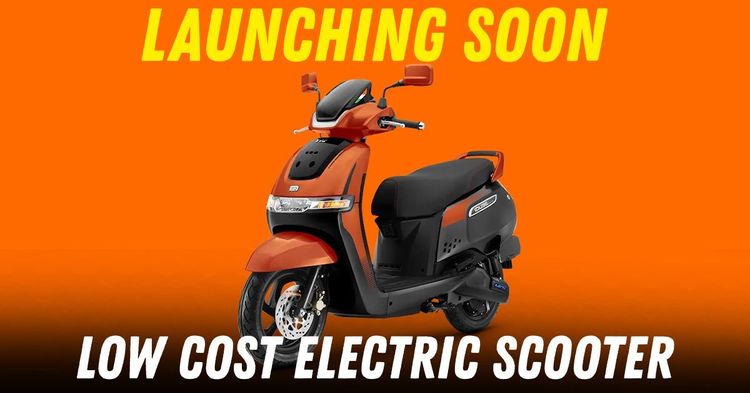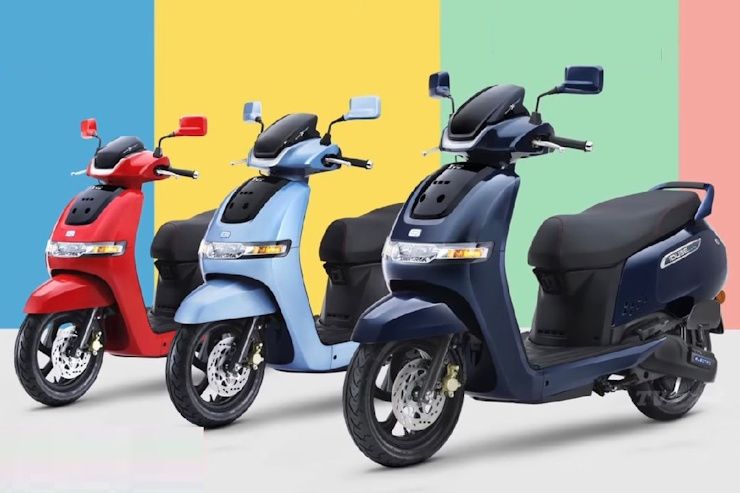TVS Motors' Budget EV Scooter Coming Before Festive Season: Details!


As India’s festive season approaches, TVS Motor Company is gearing up to launch its most affordable electric scooter yet, aiming to appeal to value-conscious urban commuters. With a price tag expected to sit between ₹90,000 and ₹1 lakh, the new model is designed to offer a practical electric alternative to petrol scooters like the Honda Activa. This could mark a significant shift in the mass-market EV landscape, especially for first-time buyers seeking to make the switch from internal combustion engines.

This upcoming electric scooter is likely to become the entry point into TVS’ electric portfolio, positioned below the iQube in both price and specifications. The approach seems clear - keep costs down without stripping away the core functions commuters need. Industry watchers suggest the model could use a hub-mounted motor paired with a 2.2 kWh battery, similar to the base iQube variant.
While this setup might offer a more modest range - around 60 to 75 km per charge which should be sufficient for daily urban rides. What TVS appears to be sacrificing in high-tech features and extended range, it is gaining in broader affordability. It’s a strategic move that places the product directly in competition with entry-level petrol scooters, aiming to shift buyer preferences toward electric alternatives.

Design-wise, early indicators suggest TVS is going for a minimalist, no-frills aesthetic. Expect analog-style instrumentation in place of digital displays, standard telescopic forks for suspension, and basic LED lighting instead of flashy headlamp designs. These choices signal a strong focus on utility and cost-efficiency rather than luxury or gimmicks.
Recent trademark applications by the company for names like “XL EV” and “E-XL” point to a design influence from the robust and work-focused XL moped series. This also suggests that the scooter might appeal not just to private users but to commercial operators looking for dependable, low-cost mobility solutions.
Storage will likely reflect the practical limitations of compact form factors, with under-seat space suitable for small bags but probably not large enough to store a helmet. Colour options are expected to be conservative, with an emphasis on high-demand shades that appeal to the mass market.
TVS is aiming for a festive season debut between September and October, aligning the launch with a traditional spike in vehicle purchases. This strategy mirrors the company’s earlier rollout of the Jupiter CNG scooter, which benefited from festive enthusiasm and value-driven buying behaviour.
By bringing an affordable EV to the market at a time when customers are most receptive, TVS is setting the stage for a strong launch. The brand also enjoys the backing of one of the most widespread dealership and service networks in the country, which could give it an edge over rivals like Ola and Ather in reaching Tier 2 and Tier 3 buyers.
In a market where many buyers are still concerned about EV charging and infrastructure, TVS is expected to offer a portable charger compatible with regular household sockets. A full charge is likely to take four to five hours, aligning with overnight charging routines that most Indian commuters already follow.
Cost of ownership could be one of the biggest draws. Electric scooters are significantly cheaper to run compared to petrol-powered ones. While fuel-powered scooters might cost around ₹2 per kilometre, this electric model’s energy costs could be as low as ₹0.20 per kilometre. Maintenance costs are also expected to be lower, thanks to fewer moving parts and the absence of oil and filter changes. However, buyers will need to plan for battery replacement costs after five to eight years, which remains a concern across the EV segment.
There is still some uncertainty about how TVS will position the scooter in terms of branding. One possibility is that the model will join the Jupiter family, which already includes petrol and CNG variants. With over 80,000 units sold monthly, the Jupiter name holds strong brand equity, and an electric variant under the same umbrella could ease customer transition.
On the other hand, a separate “XL EV” label could help tap into a different audience altogether: commercial users who value durability, simplicity, and load-carrying capacity. This dual-branding possibility could allow TVS to carve out space in both personal and utility-focused segments.
Despite the promise, TVS will need to navigate some clear challenges. Government subsidies under the FAME-II scheme have been reduced, with a maximum benefit of ₹22,500 per vehicle. This may force manufacturers like TVS to absorb some of the cost themselves if they are to hit the sub-₹1 lakh pricing goal. Moreover, ongoing supply chain constraints for lithium-ion cells and electronic components continue to affect the industry, though TVS’ increasing reliance on local suppliers could provide some insulation.
Customer feedback on existing EV models from TVS shows that buyers appreciate the smooth ride and quietness but often wish for more storage and better ergonomics. Whether the new scooter will successfully balance ride quality with day-to-day practicality at a lower price point remains to be seen.
TVS’ upcoming launch reflects a broader shift in strategy from premium-focused electric vehicles to mass-market mobility solutions. The company is no longer just trying to keep pace with electric newcomers; it’s positioning itself as a mainstream EV provider for millions of Indian commuters.
If priced and marketed right, this electric scooter could do more than coexist with petrol models. As awareness of electric mobility grows and infrastructure continues to improve, TVS is hoping to turn budget-conscious riders into EV adopters, accelerating India’s transition toward cleaner, more sustainable transport.